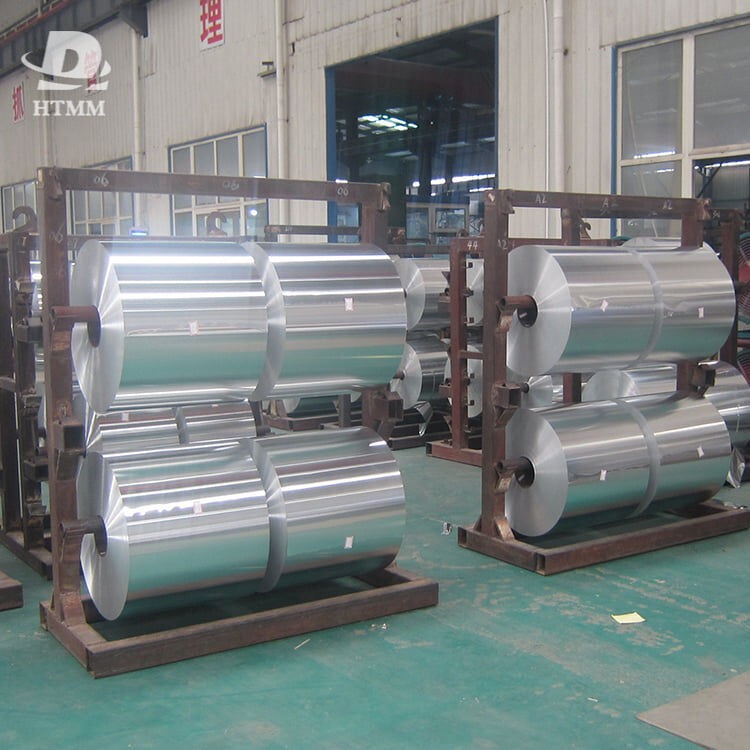One of the first tasks of any packaging is to prevent spoilage, the process by which baked goods lose their crispy texture over time due to moisture loss or absorption. When it comes to crackers, crackers, and chips, spoilage can turn them from mouth-wateringly crunchy to disappointingly soggy in a matter of days. Laminated foil excels at maintaining crispness thanks to its strong moisture and gas barrier properties.
 The lamination process bonds multiple layers together, typically polyethylene plastic to the inner and outer surfaces of an best aluminum foil core. This creates a highly effective barrier that prevents moisture and gases such as oxygen and carbon dioxide from passing through. Items such as cookies can maintain their ideal crispness for weeks or even months inside laminated foil packaging without being exposed to moisture or gas.
The lamination process bonds multiple layers together, typically polyethylene plastic to the inner and outer surfaces of an best aluminum foil core. This creates a highly effective barrier that prevents moisture and gases such as oxygen and carbon dioxide from passing through. Items such as cookies can maintain their ideal crispness for weeks or even months inside laminated foil packaging without being exposed to moisture or gas.Retailers and consumers alike want packaged goods to retain that crispy texture right out of the oven until the package is opened. A vapor barrier helps eliminate concerns about staleness on store shelves or in the pantry. It also reduces food waste by extending the window of time during which the product is of optimal quality and enjoyment.
Of course, keeping food fresh means more than just blocking out moisture; it also requires preventing contamination. Laminated foil is highly impermeable to microorganisms and spoilage-causing agents such as mold spores, yeast and bacteria. Its smooth, non-porous structure does not provide any place for contaminants to adhere or multiply.
This hygienic quality is invaluable for items that are handled frequently, such as single-serve snack packs from cupboards or vending machines. Customers rightly expect peace of mind that the products they consume will not be exposed to potential pathogens during transportation or storage.
The nonporous composition also resists fingerprint smudges and other types of surface contamination that may come into contact with unpackaged food. There are no nooks and crannies for debris or microorganisms to collect. A simple wipe is often all it takes to restore the original appearance and hygienic condition of the laminated aluminium foil roll before packaging, which is important to maintaining high food safety standards during production.
Of course, there's no point in preserving freshness and preventing contamination if the packaging can't withstand the rigors of shipping and storage. But laminated foil offers exceptional durability, able to withstand the impact and compression stress of trucks, warehouses and distribution centers without damage.
Its stiffness and foldability allow laminated foil to be formed into durable cartons, bags, trays or rolls to protect products and maintain their shape throughout the supply chain. This maintains the attractiveness of the item and prevents the item from being crushed.
Longer shelf life is closely related to the packaging's ability to resist punctures, tears, or other openings during handling. 8079 laminated foil is both impact-resistant and self-sealing—small cuts or punctures tend to get pinched rather than widened. This structural integrity gives retailers confidence that products packaged in foil will arrive in stores in salable condition.
Durability also means it lasts longer when you get it home. Foil packaging is sturdy enough to be opened and closed over and over, making it ideal for snacking almost anywhere, from picnics to road trips to your desk, maintaining freshness until consumption. Less breakage means less food being accidentally wasted before it can be enjoyed.
In addition to their protective features, laminated foils also offer user-friendly features that are favored by mobile consumers. Many foil packages are designed to be easily opened via a pull tab, eliminating the need for scissors or sharp tools. Easy access allows you to grab and eat snacks quickly without getting your fingers dirty.
Reclosability allows partially consumed portions to remain fresher longer after resealing. Die-cuts and perforations along the edges create neat tear lines, maintaining a beautiful appearance. Once empty, foil packaging compresses to a small size for easier handling – an important quality as awareness of minimizing packaging waste continues to grow.
These benefits bring simple enjoyment to a busy lifestyle. Picking up portable foil packaged snacks means no fuss or leftovers, just pure snacking. The clean look and easy-to-open appearance are a welcome change compared to hard-to-open plastic or boxes that can leave crumbs behind.
While offering premium protection and performance, laminated foil packaging is also surprisingly affordable. As an economical and widely available material, aluminum foil keeps unit costs low, which is important for high-volume snacks and baked goods where profit margins are slim.
Efficient production helps lower the final price. Foil laminates can be quickly printed, formed and sealed using existing packaging machinery with minimal adjustments. Large rolls allow for continuous high-speed filling lines. In post-production, aluminum foil takes up less storage and shipping space than bulkier alternatives.
.jpg) As a basic material that requires no special additives, aluminum foil packaging contributes to supply chain sustainability through standardized distribution channels and recycling infrastructure. This reduces expenses throughout the fulfillment lifecycle, from raw materials to empty containers. Cost competitiveness makes aluminum foil an easy choice for companies looking for affordable packaging solutions.
As a basic material that requires no special additives, aluminum foil packaging contributes to supply chain sustainability through standardized distribution channels and recycling infrastructure. This reduces expenses throughout the fulfillment lifecycle, from raw materials to empty containers. Cost competitiveness makes aluminum foil an easy choice for companies looking for affordable packaging solutions.Although aluminum foil is often considered disposable, it is one of the most environmentally friendly types of flexible packaging. As an infinitely recyclable material, there is no limit to the useful life of aluminum foil. An estimated 75% of the aluminum foil produced each year is currently recycled.
Recycling aluminum requires only 5% of the energy required to produce primary aluminum. This means a significant reduction in emissions - recycling one foil packaging can save enough energy to power a laptop for three hours. The material retains its properties indefinitely, so the recycled foil can become part of a new laptop or building in the future.
In addition, aluminum production is relying more on renewable energy sources such as hydropower. Combined with lightweight efficiency, this means the carbon footprint of producing new foils is reduced every year. The manufacturer has set a target of making foil packaging carbon neutral by 2025.
Aluminum foil is also very compact before recycling, just like trash. The 20-foot rolls can be pressed into 1-foot cubes and take up 66 times less storage space than loose rolls. This saves on transportation and landfill costs. In areas where marine debris is a serious problem, aluminum foil does not break down like plastic, thus preventing harm to wildlife.
Although aluminum foil is not compostable, it stands out as a "first-tier" choice among recyclable materials. Additionally, it provides the best performance barrier properties needed to maximize service life and minimize food waste. This management makes aluminum foil an attractive environmental choice for companies pursuing sustainable packaging goals.
Much of this affinity stems from aluminum foil’s intrinsic connection to ideas like freshness and hygiene honed over generations. Although its price is competitive with plastic, its premium image increases brand loyalty.
The combination of laminated aluminum foil and the world of snacking is here to stay because it actually works. From production to retail to home enjoyment, aluminum foil offers unparalleled product protection and low-impact sustainability. Its traditional pedigree strengthens customers' emotional connection with the perception of quality.
If you are interested in laminated aluminum foil, you can contact us and we will give you the best service.

All of this combines to keep your favorite foods deliciously fresh—and the first bite tastes just like the baker or manufacturer intended. For companies seeking packaging rock stars to stabilize brand reputations, aluminum foil remains the top choice for baked goods, cookies, chips and other snacks around the world. Foil wrappers add that extra special touch, turning the mundanity of plastic packaging into a bit of

